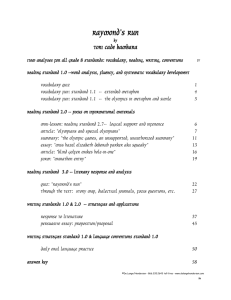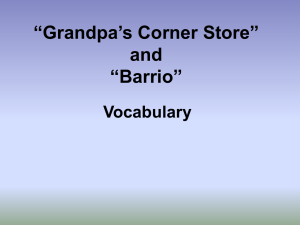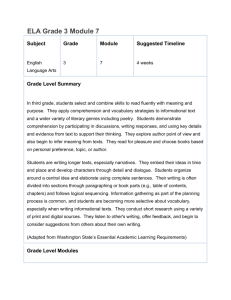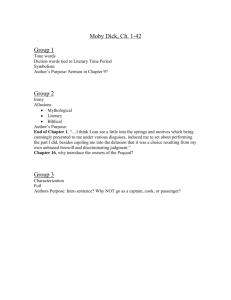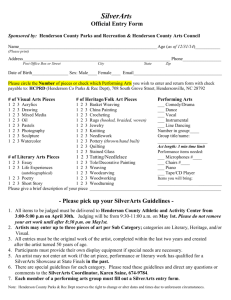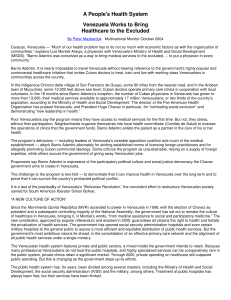"barrio boy"
advertisement
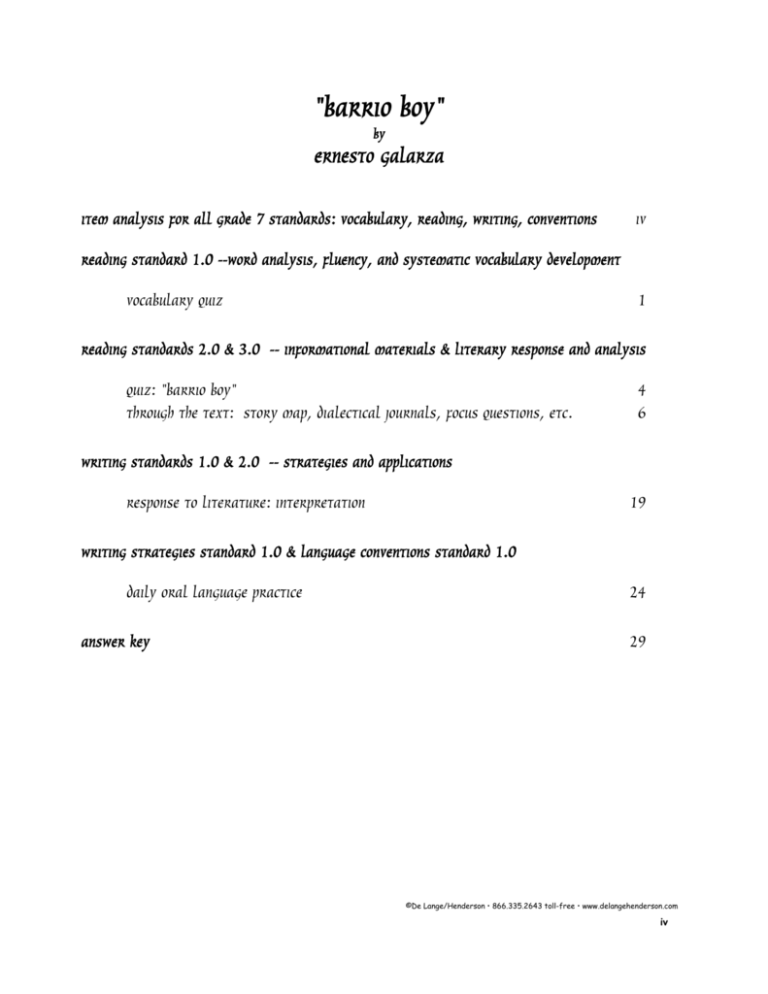
"barrio boy" by ernesto galarza item analysis for all grade 7 standards: vocabulary, reading, writing, conventions iv reading standard 1.0 --word analysis, fluency, and systematic vocabulary development vocabulary quiz 1 reading standards 2.0 & 3.0 -- informational materials & literary response and analysis quiz: "barrio boy" through the text: story map, dialectical journals, focus questions, etc. 4 6 writing standards 1.0 & 2.0 -- strategies and applications response to literature: interpretation 19 writing strategies standard 1.0 & language conventions standard 1.0 daily oral language practice answer key 24 29 ©De Lange/Henderson • 866.335.2643 toll-free • www.delangehenderson.com iv ITEM ANALYSIS FOR “BARRIO BOY” GRADE 7 STANDARDS READING 1.0 Vocabulary 1.1 1.2 1.3 Identify idioms, analogies, metaphors, similes in prose and poetry. Use knowledge of Greek, Latin, and Anglo-Saxon roots and affixes to understand content area vocabulary. Clarify word meanings through the use of definition, example, restatement, or contrast. 2.0 Informational Reading Comprehension 2.1 Understand and analyze the differences in structure & purpose between various categories of informational materials [textbooks, newspapers, instructional manuals, signs]. Locate information by using a variety of consumer, workplace, and public documents. Analyze text that uses the cause-and-effect organizational pattern. Identify and trace the development of an author's argument, point of view, or perspective in text. Understand and explain the use of a simple mechanical device by following technical directions. Assess the adequacy, accuracy,, and appropriateness of the author's evidence to support claims and assertions, noting instances of bias and stereotyping. 2.2 2.3 2.4 2.5 2.6 18 Questions Literary Response and Analysis 3.1 Articulate the expressed purposes and characteristics of different forms of prose [short story, novel, novella, essay]. Identify events that advance the plot and determine how each event explains past or present action[s] or foreshadows future action[s]. Analyze characterization as delineated through a character's thoughts, words, speech patterns, and actions; the narrator's description; and the thoughts, words, and actions of other characters. Identify and analyze recurring themes across works [the value of bravery, loyalty, and friendship; the effects of loneliness]. Contrast points of view [first and third person, limited and omniscient, subjective and objective] to narrative text and explain how they affect the overall theme of the work. Analyze a range of responses to a literary work and determine the extent to which the literary elements in the work shaped those responses. 3.3 3.4 3.5 3.6 13 4 Questions 3.0 3.2 3 2 N/A N/A 1 2 N/A 1 11 Questions 1 2 2 2 2 2 ©De Lange/Henderson • 866.335.2643 toll-free • www.delangehenderson.com v GRADE 7 ITEM ANALYSIS continued WRITING 1.0 Writing Strategies 1.1 Create an organizational structure that balances all aspects of the composition and uses effective transitions between sentences to unify important ideas. Support all statements and claims with anecdotes, descriptions, facts and statistics, and specific examples. Use strategies of notetaking, outlining, and summarizing to impose structure on composition drafts. Identify topics, ask and evaluate questions; and develop ideas leading to inquiry, investigation, and research. Give credit for both quoted and paraphrased information in a bibliography by using a consistent and sanctioned format and methodology for citations. Create documents by using word-processing skills and publishing programs; develop simple databases & spreadsheets to manage information & prepare reports. Revise writing to improve organization and word choice after checking the logic of the ideas and the precision of the vocabulary. 1.2 1.3 1.4 1.5 1.6 1.7 11 Questions 2.0 Writing Styles 2.1 2.2 2.3 2.4 2.5 Narrative: Story, Autobiographical, and/or Biographical Response to Literature Research Report Persuasive: Proposition or Proposal Summary 2 1 2 1 2 2 1 Prompt WRITTEN AND ORAL ENGLISH LANGUAGE CONVENTIONS 1.1 1.2 1 1 9 Questions 2 1 1.5 1.6 Place modifiers properly and use the active voice. Identify and use infinitives and participles and make clear references between pronouns and antecedents. Identify all parts of speech and types and structure of sentences. Demonstrate the mechanics of writing [quotation marks, commas at end of dependent clauses] and appropriate English usage [pronoun reference]. Identify hyphens, dashes, brackets, and semicolons and use them correctly. Use correct capitalization. 1.7 Spell derivatives correctly by applying the spellings of bases and affixes. 1 1.3 1.4 1 2 1 1 ©De Lange/Henderson • 866.335.2643 toll-free • www.delangehenderson.com vi
